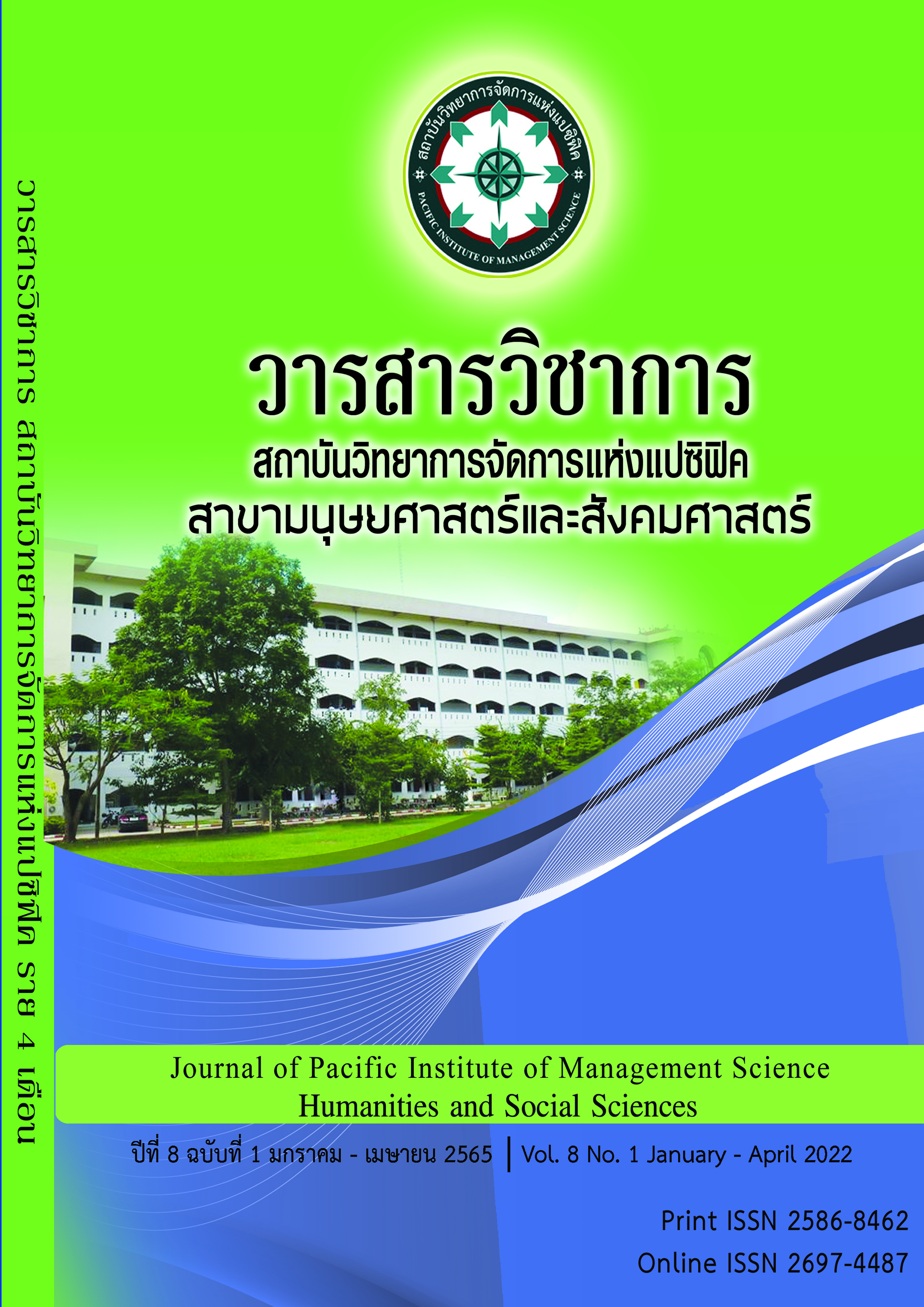High Quality Vocational Manpower for Disruptive Technology Era
Abstract
Innovation and technology development has changed relentlessly. As a result, a large number of new industries and products have emerged to meet the needs of society. In adjusting the direction and to creating a way to develop the country to prosper with new opportunities and threats, it is necessary to shift more production of goods to production and services including the use of innovation to drive Thailand in every dimension. In addition, the COVID-19 crisis also encourages every organization and everyone have to speed up adaptation in order to survive especially the enhancement and development of various skills (Re skills, Up skills, New skills) to be ready to deal with the new normal lifestyle. These changes have resulted in the need for vocational workforce production to adjust its form as well, to meet the needs of the country's development and technology changes in line with the national strategy build competitiveness and drive the economy to overcome the middle-income trap of the country.
References
ธนาคาร คุ้มภัย และคณะ. (2563). รูปแบบการจัดการเรียนการสอนเรื่องเทคโนโลยีอินเทอร์เน็ตของสรรพสิ่งผ่านการเรียนรู้แบบโครงงานเป็นฐาน. วารสารวิชาการสถาบันการอาชีวศึกษาภาคใต้ 1. 5, 1(ม.ค.- มิ.ย.2563), 33-41.
นรรัชต์ ฝันเชียร. (2562). การส่งเสริมการศึกษาไทยเพื่อรับมือกับโลกยุค VUCA. ที่มา http://www.trueplookpanya.com/blog/content/76134/-blog-teaartedu-teaart-(เข้าเมื่อ 3ธันวาคม 2563)
ยุทธศาสตร์ชาติ (พ.ศ. 2561 - 2580) ราชกิจจานุเบกษา. เล่ม 135 ตอนที่ 82 ก 13 ตุลาคม 2561
สมพร ปานดำ. (2563). พลิกวิกฤตสู่โอกาสของอาชีวศึกษาไทยบนความปกติใหม่.วารสารสังคมศาสตร์และมนุษยวิทยาเชิงพุทธ. 5, 7 (ก.ค. 2020), 1-13.
สมพร ปานดำ. (2563). ยุทธศาสตร์การผลิตกำลังคนอาชีวศึกษาคุณภาพสูง รองรับนโยบายการพัฒนาเศรษฐกิจฐานนวัตกรรม. วารสารพัฒนาเทคนิคศึกษา มหาวิทยาลัยเทคโนโลยีพระจอมเกล้าพระนครเหนือ.
สำนักงานเลขาธิการสภาการศึกษา. (2559).โครงการศึกษาเพื่อทบทวนความต้องการกำลังคนเพื่อใช้วางผลิตและพัฒนาทรัพยากรมนุษย์ของประเทศ. กรุงเทพฯ :บริษัทพริกหวานกราฟฟิคจำกัด.
สำนักงานเลขาธิการสภาการศึกษา. (2561).อนาคตภาพของการผลิตและพัฒนากำลังคนอาชีวศึกษาตามความต้องการของตลาดแรงงานและทิศทางการพัฒนาประเทศ. พิมพ์ครั้งที่ 1. กรุงเทพฯ :บริษัท 21 เซ็นจูรี่ จำกัด
Poornima Luthra. (2020). 4 ways COVID-19could change how we educate future generations. Retrieved August 3, 2020, from https://www.weforum.org/agenda/2020/03/4-ways-covid-19-education- future-generations/
Praornpit Katchwattana. ระดมสมองยกระดับ ‘ทักษะแรงงานไทย’ โจทย์ใหญ่ที่ต้องรับมือ ในยุคเทคโนโลยีเปลี่ยน ที่มา https://www.salika.co/2019/04/21/reskill-upskill-worker-disrupted-technology. (เข้าเมื่อ 5 สิงหาคม 2563)
Praornpit Katchwattana. แนวทางExcellence Center ลายแทงใหม่อาชีวศึกษา ผลิตบุคลากรตอบโจทย์ภาคอุตสาหกรรมแบบไม่หลงทาง. ที่มา https://www.salika.co/2020/08/17/excellence-center-way-new-paradigm-of-vocational-education/ (เข้าเมื่อ 4 มีนาคม 2564)
Praornpit Katchwattana. 10 ทักษะจำเป็นWorld Economic Forum ย้ำชัดคนทำงานควรต้องมีในปี 2025 ถ้าไม่อยากถูกดิสรัป. ที่มา https://www.salika.co/2021/01/23/10- skills- world-economic-forum-2025 (เข้าเมื่อ 4 มีนาคม2564)
Spring news. (2563). โควิด 19 เปลี่ยนแปลงโลก การศึกษา. ที่มา https://www.springnews.co.th/alive/edutainment-alive/639508 (เข้าเมื่อ5 ธันวาคม 2563 )
Downloads
Published
Issue
Section
License
Copyright (c) 2022 Pacific Institute of Management Science

This work is licensed under a Creative Commons Attribution-NonCommercial-NoDerivatives 4.0 International License.
บทความที่ได้รับการตีพิมพ์เป็นลิขสิทธิ์ของ สถาบันวิทยาการจัดการแห่งแปซิฟิค
ข้อความที่ปรากฏในบทความแต่ละเรื่องในวารสารวิชาการเล่มนี้เป็นความคิดเห็นส่วนตัวของผู้เขียนแต่ละท่านไม่เกี่ยวข้องกับสถาบันวิทยาการจัดการแห่งแปซิฟิค และคณาจารย์ท่านอื่นๆในสถาบันฯ แต่อย่างใด ความรับผิดชอบองค์ประกอบทั้งหมดของบทความแต่ละเรื่องเป็นของผู้เขียนแต่ละท่าน หากมีความผิดพลาดใดๆ ผู้เขียนแต่ละท่านจะรับผิดชอบบทความของตนเองแต่ผู้เดียว







